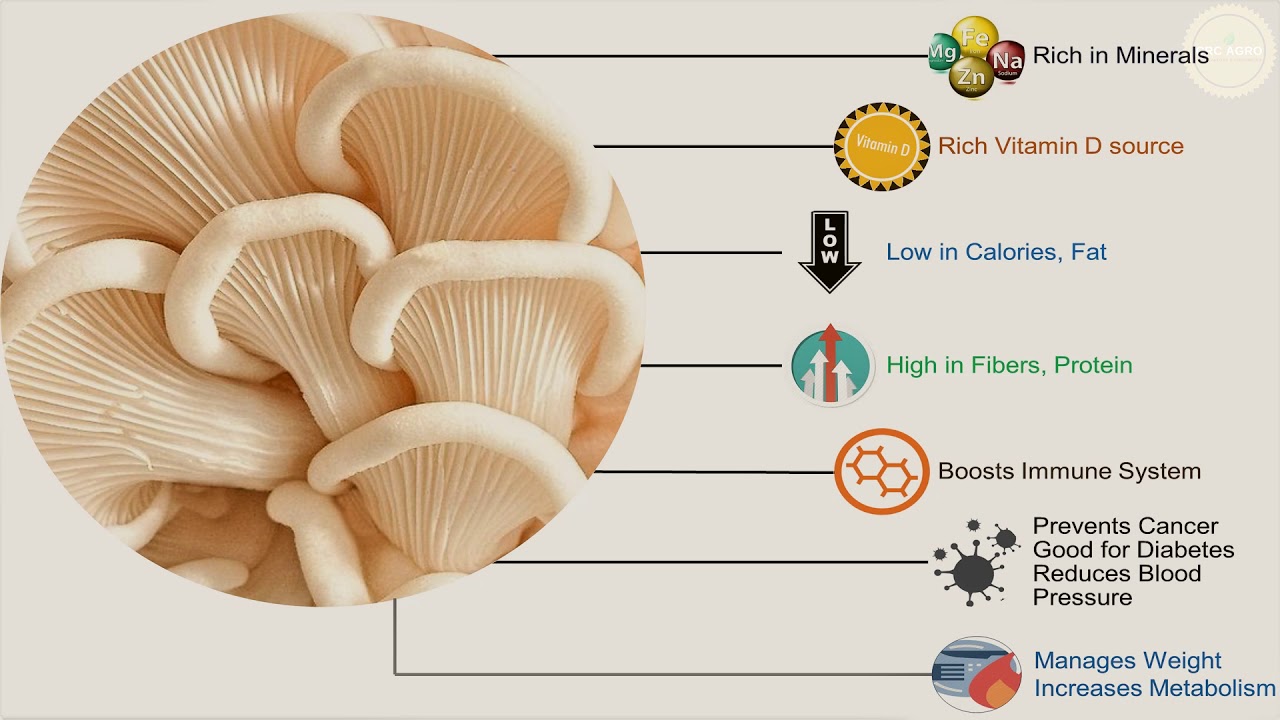What is cremini mushrooms, it often underestimated in the realm of vegetables, hold a unique place in the world of culinary delights. These fungi, with their earthy flavors and versatile textures, can elevate your vegetable dishes to new heights. In this exploration, we’ll unravel the mysteries of mushrooms, understanding what makes them distinct and discovering creative ways to integrate them seamlessly into your favorite vegetable recipes.

Table of Contents
What is cremini mushrooms Mushroom Marvel: A Brief Introduction
54.6K subscribers
Mushrooms, scientifically classified as fungi, are a diverse group of organisms that come in various shapes, sizes, and colors. While not technically vegetables, mushrooms often find themselves in the same category due to their culinary applications.
What sets mushrooms apart is their umami-rich flavor profile, adding a savory depth to dishes. The most commonly used varieties include button mushrooms, cremini, portobello, shiitake, and oyster mushrooms, each bringing its own unique taste and texture to the table.
What is cremini mushrooms Nutritional Powerhouses
Beyond their delectable taste, mushrooms boast an impressive nutritional profile. They are an excellent source of essential nutrients, including vitamins B and D, selenium, and antioxidants. The high fiber content in mushrooms also contributes to digestive health, making them a valuable addition to any balanced diet.
What is cremini mushrooms How to Choose and Store Mushrooms
When selecting mushrooms, look for those with firm, dry caps and an earthy aroma. Avoid mushrooms that appear slimy or have a strong, unpleasant smell.Proper storage is crucial to maintain their freshness. Keep mushrooms in a paper bag in the refrigerator, allowing them to breathe and preventing excess moisture buildup. Avoid plastic bags, as they can lead to moisture retention and quick spoilage.
What is cremini mushrooms Preparing Mushrooms for Cooking
Before incorporating mushrooms into your vegetable dishes, it’s essential to clean and prepare them properly. Wiping mushrooms with a damp cloth or using a soft brush helps remove any dirt without saturating them with water, which can compromise their texture and flavor.For recipes that call for sliced mushrooms, aim for uniform thickness to ensure even cooking. For heartier varieties like portobello mushrooms, remove the gills to achieve a smoother texture and enhance the dish’s visual appeal.
Complementary Flavors: Mushrooms and Vegetables
Now that we’ve laid the groundwork, let’s delve into the exciting realm of combining mushrooms with vegetables. The key lies in understanding the synergy between these ingredients, allowing their unique characteristics to shine.
1. Stir-Fried Mushroom Medley with Veggies
Create a vibrant stir-fry by combining an assortment of mushrooms with colorful bell peppers, broccoli, and snap peas. The mushrooms absorb the savory flavors of the stir-fry sauce, providing a satisfying contrast to the crisp vegetables.
2. Roasted Vegetable and Mushroom Skewers
Thread mushrooms, cherry tomatoes, zucchini, and red onions onto skewers for a delightful barbecue or oven-roasted dish. The mushrooms add a meaty texture, while the vegetables caramelize to perfection, creating a visually appealing and flavorful ensemble.
3. Mushroom-infused Pasta Primavera
Elevate a classic pasta primavera by sautéing mushrooms with garlic and herbs. Toss them with a medley of seasonal vegetables and your favorite pasta for a wholesome and satisfying meal.
4. Stuffed Mushrooms with Vegetable Quinoa
Transform mushrooms into bite-sized delights by stuffing them with a flavorful vegetable quinoa mixture. This versatile dish can serve as an appetizer or a main course, impressing even the most discerning palates.
What is cremini mushrooms Experimenting with Mushroom Varieties
While button mushrooms are a popular choice, don’t hesitate to explore other varieties for a diverse and nuanced culinary experience.
1. Shiitake Mushrooms:
Known for their robust flavor, shiitake mushrooms add an umami punch to soups, stews, and Asian-inspired dishes. Remove the tough stems before cooking for a more palatable texture.
2. Oyster Mushrooms:
With a delicate, seafood-like taste, oyster mushrooms work well in light, creamy sauces and can be a delightful addition to risottos and pasta dishes.
3. Portobello Mushrooms:
These large mushrooms are a favorite for grilling and stuffing. Marinate them in balsamic vinaigrette before grilling for a smoky, savory flavor.
The Final Note: Mushrooms and Vegetables, a Perfect Pairing
In conclusion, mushrooms offer a world of culinary possibilities when combined with vegetables. From enhancing flavors to providing nutritional benefits, these fungi are a valuable addition to any kitchen. So, the next time you embark on a culinary adventure, don’t forget to invite mushrooms to the party—your taste buds will thank you for the delightful experience!
What is cremini mushrooms of The Health Benefits of Mushroom Vegetables
In the nutrition, there’s a silent hero that often doesn’t get the attention it deserves – mushrooms. These fungi have been a part of human diets for centuries, prized not just for their unique flavor but also for their incredible health benefits. Let’s embark on a journey through the mushroom kingdom and explore why these vegetable-like wonders are a powerhouse of nutrients.
1. Nutrient-rich Powerhouses
Mushrooms might be small, but they are mighty in terms of nutrition. They are an excellent source of essential vitamins and minerals, including vitamin D, B-vitamins, selenium, and copper. This nutrient diversity contributes to overall health and well-being, supporting various bodily functions.
2. Immune System Boosters
A strong immune system is crucial for a healthy life, and mushrooms play a vital role in bolstering it. Beta-glucans, compounds found in mushrooms, have been shown to enhance the activity of natural killer cells and macrophages, the frontline defenders of our immune system.
3. Rich in Antioxidants
Mushrooms are packed with antioxidants, which help combat oxidative stress in the body. Antioxidants play a crucial role in neutralizing free radicals, thereby reducing the risk of chronic diseases and promoting overall health. The presence of ergothioneine, a unique antioxidant in mushrooms, adds an extra layer of protection against cellular damage.
4. Heart Health Guardians
The fiber, potassium, and vitamin C content in mushrooms contribute to heart health. These elements work together to regulate blood pressure, reduce cholesterol levels, and improve cardiovascular function. Including mushrooms in your diet may be a delicious way to show some love to your heart.
5. Weight Management Allies
For those on a journey to maintain or lose weight, mushrooms can be valuable allies. Low in calories and high in fiber, they provide a feeling of fullness, making it easier to manage calorie intake. Additionally, they are a savory addition to meals, adding flavor without the need for excessive fats or salt.
6. Diabetes-Friendly Option
Mushrooms boast a low glycemic index, making them a smart choice for individuals managing diabetes. They contribute to stable blood sugar levels and can be a satisfying alternative to higher-carb foods.
7. Gut Health Guardians
A healthy gut is at the core of overall well-being, and mushrooms can play a role in maintaining gut health. The fiber in mushrooms promotes digestive regularity, while their prebiotic properties support the growth of beneficial gut bacteria.
8. Adaptogenic Properties
Certain mushrooms, such as reishi and chaga, are considered adaptogens. These fungi have been traditionally used in herbal medicine to help the body adapt to stress and promote balance. Incorporating adaptogenic mushrooms into your routine may contribute to better stress management and improved resilience.
Embracing the Mushroom Marvels for What is cremini mushrooms
Mushrooms are not just culinary delights; they are nutritional powerhouses with a myriad of health benefits. Whether you sauté them, toss them in a salad, or blend them into a hearty soup, incorporating mushrooms into your diet can be a flavorful and health-conscious choice. As we delve deeper into the science behind these fungi, it’s clear that mushrooms deserve a prime spot on our plates for the sake of our health and well-being.
So, the next time you savor the rich umami flavor of mushrooms, know that you’re not just treating your taste buds but also nourishing your body in ways that go beyond the plate. Let the mushroom revolution in your kitchen begin.Mushrooms, with their earthy flavor and versatile nature, have long been a favorite in kitchens around the world. Among the plethora of mushroom varieties, one that stands out for its rich taste and adaptability is the Cremini mushroom. In this article, we’ll delve into the world of Cremini mushrooms, exploring what makes them unique and offering creative ways to incorporate them into your vegetable dishes.
What is cremini mushrooms, Understanding Cremini Mushrooms:
Cremini mushrooms, scientifically known as Agaricus bisporus, are often referred to as “baby bellas” due to their close relation to the mature Portobello mushrooms. These mushrooms have a light to dark brown cap with a firm texture and a flavor profile that sits between mild white button mushrooms and robust Portobellos.One of the key features that sets Creminis apart is their age at harvest. These mushrooms are picked later in their growth cycle compared to white button mushrooms, giving them a fuller flavor and a more pronounced earthiness.
What is cremini mushrooms Nutritional Benefits:
Apart from their delightful taste and unique texture, Cremini mushrooms come packed with nutritional benefits. They are a low-calorie food with high water content, making them a great choice for those looking to maintain a healthy weight. Additionally, Creminis are a good source of essential nutrients like vitamins B, D, and selenium, contributing to overall well-being.
Incorporating Cremini Mushrooms into Your Vegetable Dishes:
Now that we’ve acquainted ourselves with the wonders of Cremini mushrooms, let’s explore how to seamlessly integrate them into your vegetable-centric recipes.
What is cremini mushrooms Sautéed Cremini Medley:
Start by sautéing Cremini mushrooms with a mix of colorful bell peppers, zucchini, and cherry tomatoes. Add a dash of garlic and herbs for a burst of flavor. This medley can be enjoyed on its own or served over quinoa or rice.
Cremini and Spinach Stuffed Peppers:
Elevate your stuffed peppers by incorporating a mixture of sautéed Creminis and fresh spinach. The mushrooms add depth to the filling, creating a savory and satisfying dish.
Creamy Cremini Risotto:
Introduce a luxurious touch to your risotto by incorporating sliced Cremini mushrooms. The mushrooms infuse the dish with a rich, earthy flavor that pairs beautifully with the creamy texture of the rice.
What is cremini mushrooms Grilled Veggie and Cremini Skewers:
Thread Cremini mushrooms onto skewers with a variety of your favorite vegetables. Grill them to perfection, and you’ll have a delightful dish that’s not only visually appealing but also bursting with flavor.
Tips for Working with Cremini Mushrooms:
Cleaning: Gently wipe the mushrooms with a damp cloth or use a soft brush to remove any dirt. Avoid soaking them in water, as mushrooms are like sponges and can absorb excess moisture.
Slicing: For a meatier texture, slice Creminis slightly thicker. If you prefer a more delicate bite, opt for thinner slices.
Flavor Pairings: Cremini mushrooms pair well with garlic, thyme, rosemary, and balsamic vinegar. Experiment with these flavors to enhance the taste of your dishes.
Incorporating Cremini mushrooms into your vegetable-centric recipes is a surefire way to elevate your culinary creations. Their robust flavor and nutritional benefits make them a valuable addition to any kitchen. Whether you’re a seasoned chef or a home cook experimenting with flavors, let the versatile Cremini mushroom be your guide to a world of delicious possibilities.
So, the next time you’re in the kitchen, consider giving Cremini mushrooms a starring role in your vegetable dishes. Your taste buds will thank you for the delightful journey into the heart of umami and earthy goodness.



















